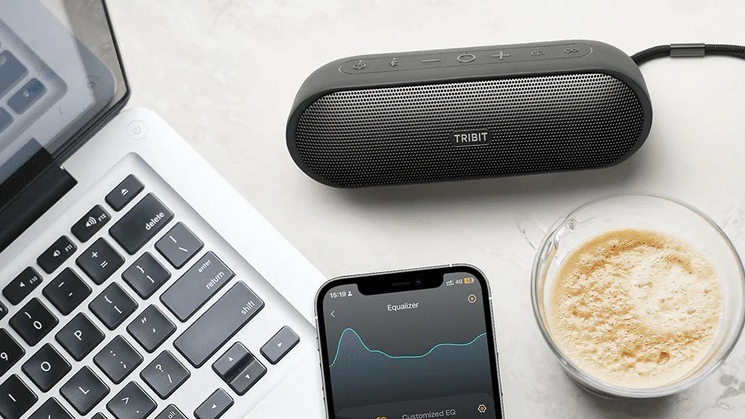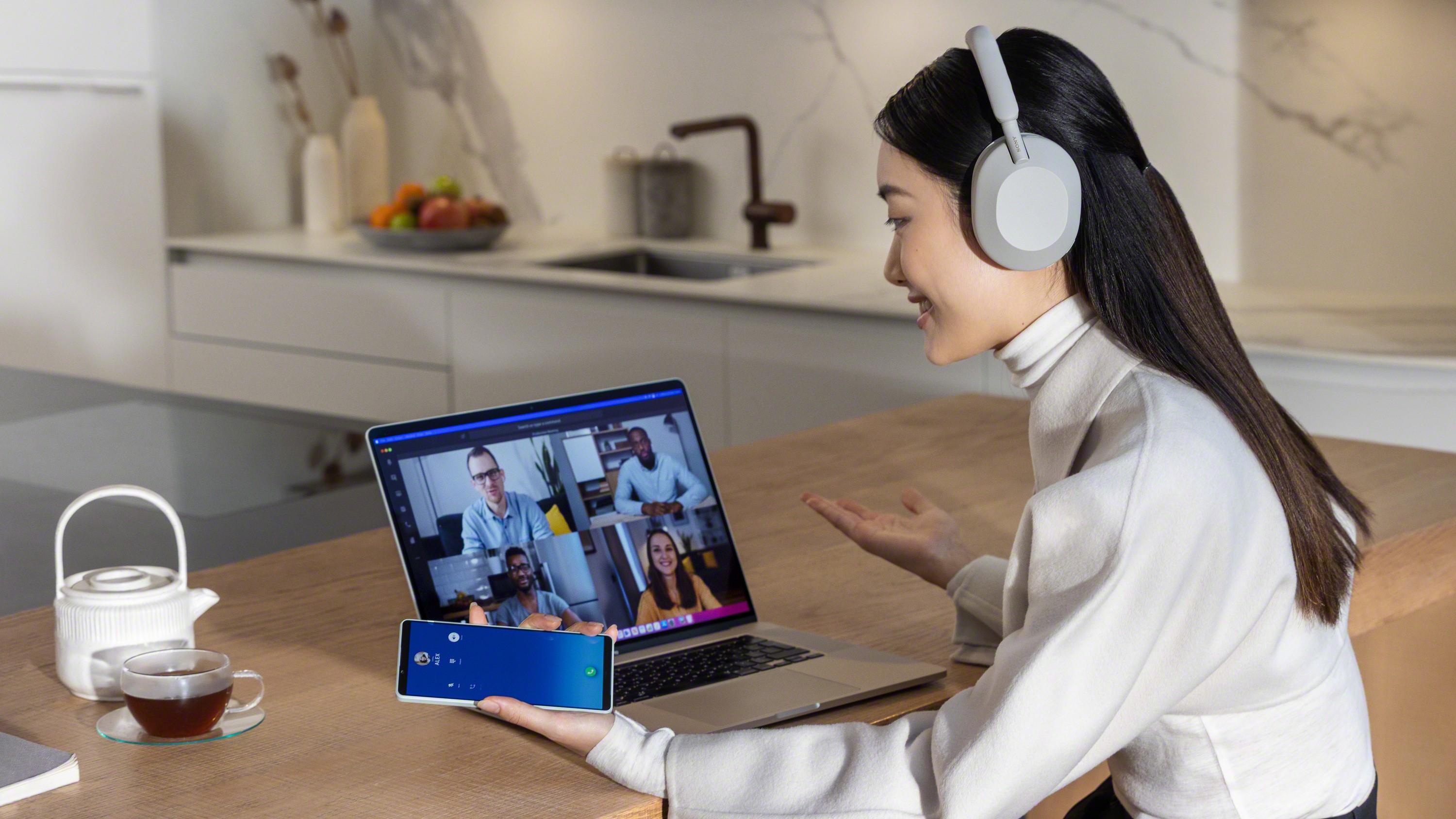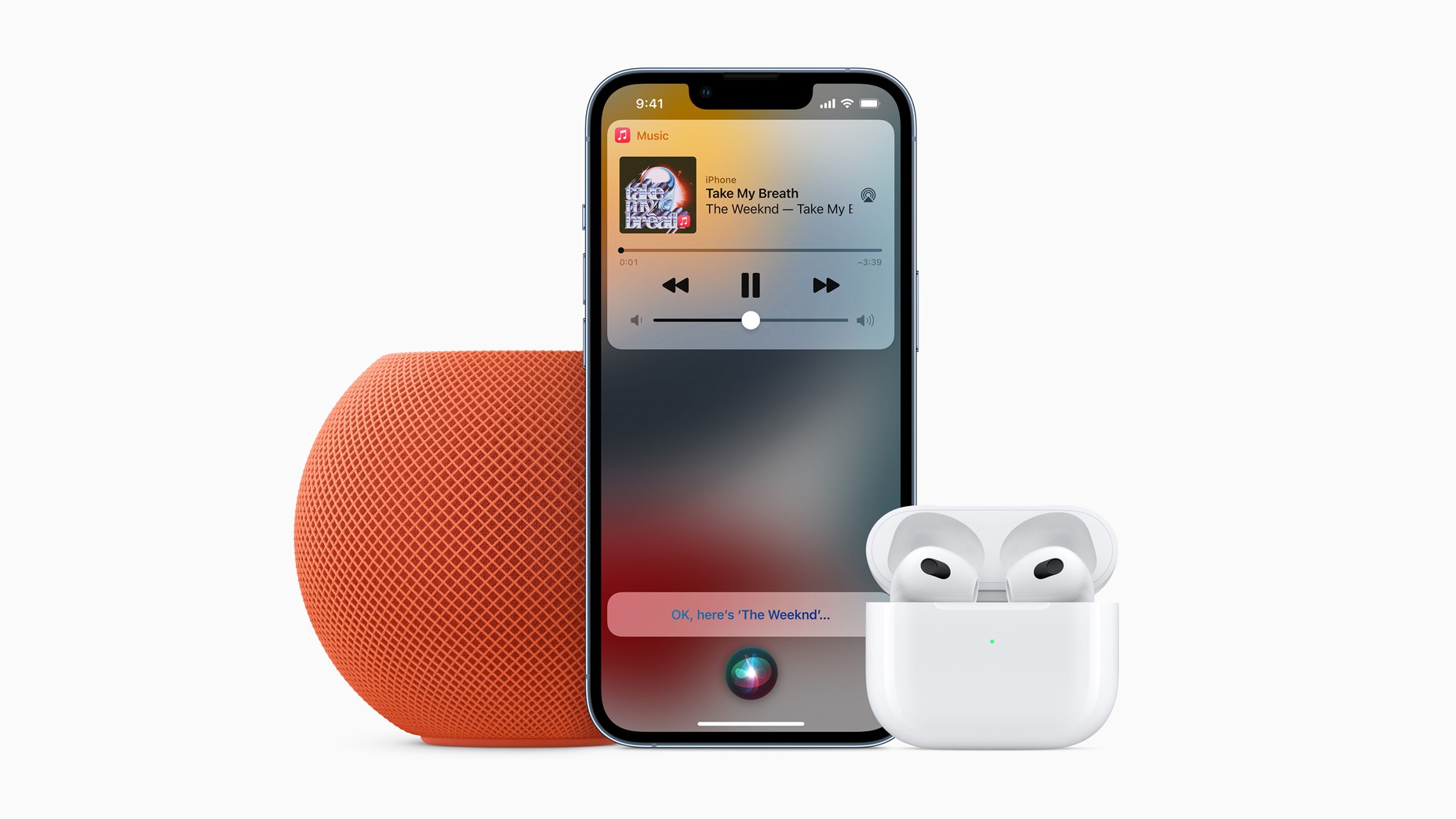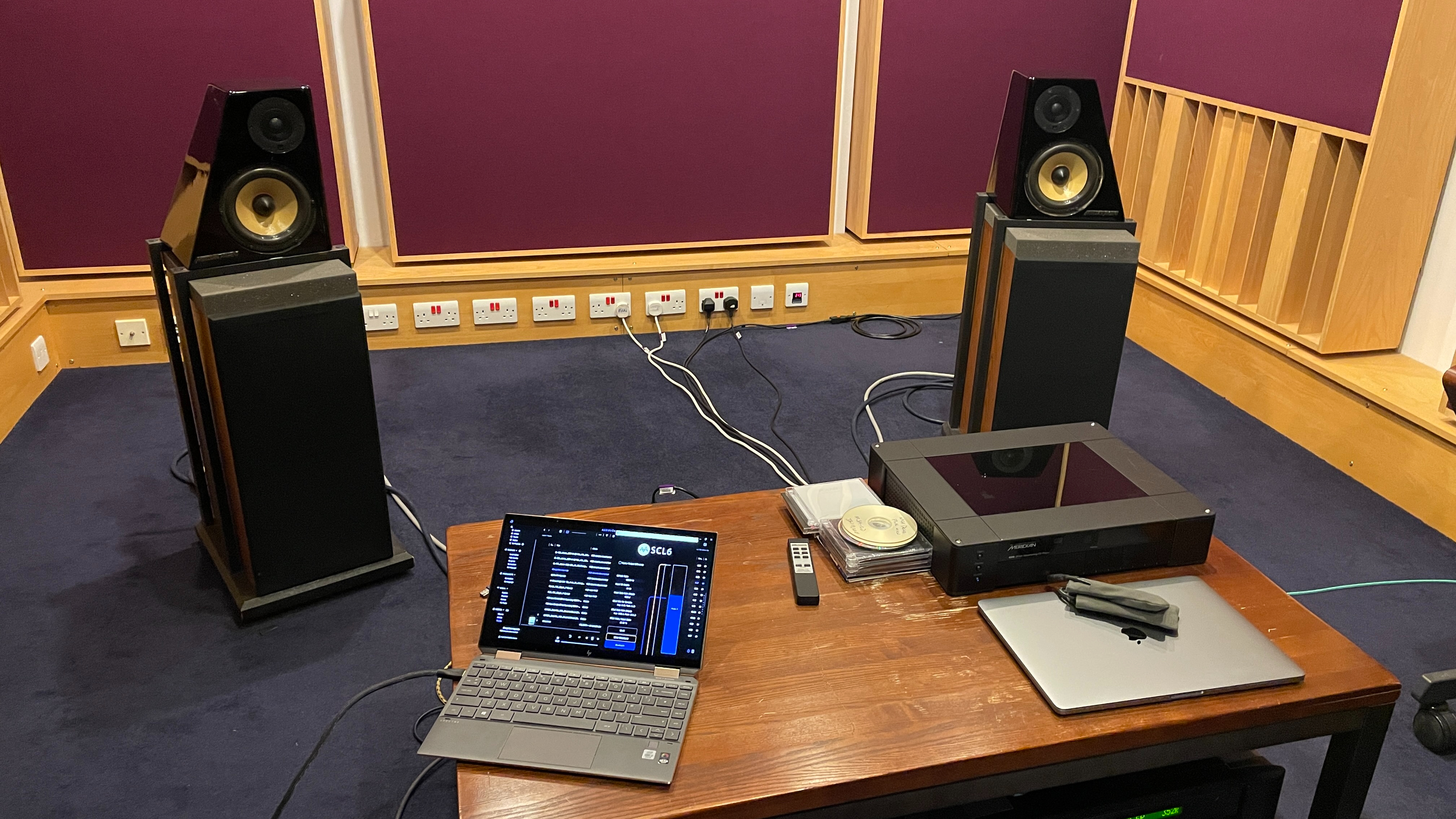What are the best Bluetooth codecs? aptX, AAC, LDAC and more explained
Get to know your aptX from your AAC

Bluetooth is everywhere: in phones, headphones, speakers, TVs, games consoles and smartwatches, not to mention gloves, rings and soccer balls (yes really). If it is powered, the chances are it uses Bluetooth. This ubiquitous technology lets devices communicate with each other wirelessly, so you can send fitness data, images and – most importantly – music through the air, no wires necessary.
But which Bluetooth codec is at play significantly affects the sound quality you'll get between your outputting source device (phone, for example) and your receiving music-playing device (headphones, say). You see, different Bluetooth codecs have different bitrates and methods of compressing and processing data during wireless transmission, so if you want to play music over Bluetooth devices in the best possible quality, you will need to use a higher-quality codec than the 'standard' AAC and SBC ones (we'll go through those shortly).
In this guide, we'll explain everything you need to know about each widely available Bluetooth codec so that you can understand their differences and know how to benefit from the better ones.
What is Bluetooth?

Bluetooth is a secure, short-range wireless technology that lets devices exchange information with one another without being physically connected by a cable. How short-range are we talking? Well, it depends on the devices and which Bluetooth technology they support, as well as the type of content being shared, but typically the range is between 10m and 100m.
Devices can share all kinds of things over Bluetooth, including fitness data, music, images, word-processing files and spreadsheets, to name just a handful. Big-data files are often better suited to being transferred over a wi-fi network because of the greater capability of 'wireless fidelity', though Bluetooth can carry larger files by first compressing them (plenty more on that later).
Essentially, a Bluetooth connection exists between a 'main unit' (a music source, say) and a 'peripheral' (a pair of headphones, for example). These two communicate over Bluetooth using ultra-high frequency (UHF) radio waves – electromagnetic waves with frequencies of around 2.4GHz (2.4 billion waves per second).
If you have ever wondered what Bluetooth is named after, the answer isn't something you would correctly guess and scribble down in a pub quiz. It's actually named after the 10th-century Danish king Harald Bluetooth, who carried the nickname on account of his off-coloured grey/blue tooth. As the story goes, during an early meeting between Intel, Ericsson and Nokia about Bluetooth's inception, Jim Kardach from Intel suggested the name 'Bluetooth', saying “King Harald Bluetooth…was famous for uniting Scandinavia just as we intended to unite the PC and cellular industries with a short-range wireless link.”
It was originally just a placeholder until the creators could think of a better name, but that never happened. So 'Bluetooth' it remained...
What is a Bluetooth codec?
So that's Bluetooth technology, and there are Bluetooth standards (or versions) that the Bluetooth Special Interest Group (SIG) governs and introduces new Bluetooth features (like Bluetooth Multipoint) and improves capabilities (like greater range, stability and security measures). Currently, we are on Bluetooth 5.4. New Bluetooth standards may allow new Bluetooth codecs to emerge...
So, a Bluetooth codec. This is a software format that compresses and then encodes music in order for it to be efficiently transmitted wirelessly between devices, before being decoded by hardware that supports that same codec. Every Bluetooth device supports at least one codec (SBC), though many support several.
Compression reduces the file size lossily (meaning it loses information as it does so), as the less information that is transmitted, the smaller the file size can be. Compression can also be used to reduce audio-coding delays and minimise latency issues.
When a music file is compressed and transmitted wirelessly between Bluetooth devices via a Bluetooth codec, some of the song's detail is almost always lost forever in the process – to varying degrees depending on the codec's capability, which we'll get to momentarily. Indeed, not all codecs are created equal; some lose more information than others.
It's important to remember, though, that even a small amount of compression is detrimental to sound quality, so pretty much every codec can be referred to as 'lossy', and not 'lossless'.
What is bitrate?
Now we're getting a bit technical, but bitrate is the simplest way to compare the capability of each Bluetooth codec for transmitting music. Bitrate is the rate at which data is transferred by a codec, measured in kilobits per second (kbps) – or megabits per second (Mbps) in the case of the most capable codecs. The higher a codec's bitrate, the more 'bandwidth' it has, meaning the more efficiently it can carry higher-quality audio without losing information. Think of a codec like a tube, and the music file as something that needs to pass through it – the bigger the tube (bandwidth), the more music information can fit and more easily flow through it.
Now, bitrate is calculated using a digital music file's sample rate and bit depth, plus the number of channels (two for stereo).
Sample rate refers to the number of times samples of the audio signal are taken per second during the analogue-to-digital conversion process. CD-quality files have a sampling rate of 44.1kHz, meaning 44,100 samples were taken every second during that process. Hi-res audio files commonly have a sampling rate of 96kHz, meaning 96,000 samples were taken every second. Generally, the higher the sampling rate, the more accurate the digital recording (music file).
What bits largely buy you is dynamic range – the difference between the quietest and loudest sounds on the recording. For reference, CD quality is 16-bit and hi-res quality is typically 24-bit. But the higher the bit depth, the bigger the file size.
So for a Bluetooth codec to handle a CD-quality file losslessly (without losing any information), it needs to be capable of a bitrate of 1411kbps. Bear that in mind when you see the codec capabilities below...
What Bluetooth codecs are available?

You will see several different kinds of codecs on the spec sheets of consumer audio devices that support Bluetooth. Typically, such devices support both the 'vanilla' SBC and AAC codecs, and perhaps also one or two others on this list. Remember, both the transmitter source (phone, portable music player) and receiver (headphones, speakers) need to support the codec to benefit from its specific compression skills.
SBC
SBC (aka Low Complexity Subband Coding) is the most basic Bluetooth codec around. It's built into the Advanced Audio Distribution Profile (A2DP), which is a set of Bluetooth specifications for streaming audio over Bluetooth. A2DP has been around for around two decades and is free for manufacturers to use (as it's in the public domain), so every Bluetooth device you can currently buy will support it.
As well as being universally supported, it doesn't demand much power from your devices. But the trade-off is lesser sound quality – it only 'handles' up to 16-bit/48kHz audio files, with a bitrate up to 345kbps (but more often manufacturers limit their devices to 256kbps to avoid more battery drain). That bitrate capability would need to be four to six times higher to pass 16-bit/48kHz files losslessly.
AAC
AAC stands for Advanced Audio Coding. It's the successor to MP3 and the default codec used on iOS devices (though it's not owned by Apple). AAC is a more complex codec than SBC, meaning more power drain but also better sound quality. It can handle 24-bit/44.1kHz audio files, with a bitrate of up to 320kbps, and is supported by Android devices (running Android 8 or later) as well as iOS.
Samsung Scalable Codec
As is often the case, Samsung has developed its own technology just for its own devices. Samsung Scalable Codec is used with its Galaxy Buds family of earbuds and can support a wide range of bitrates depending on the stability of the Bluetooth connection. As the name suggests, the codec scales, analyzing the radio frequency environment and adjusting the bitrate dynamically (from 88kbps to 512kbps).
So as the Bluetooth connection gets weaker, Samsung's codec increases the compression while lowering the bitrate. That means the sound quality nosedives, but it does at least prevent the connection from dropping out altogether.
aptX
A 'next-level' codec if you like, from chipmaker Qualcomm. aptX was created in the late 1980s, mainly for use by radio and film studios (Steven Spielberg was an early fan), and is now used primarily for Bluetooth audio playback. You'll find it in plenty of smartphones, tablets, Bluetooth speakers, AV receivers and more.
You may read that aptX can transmit music at a 'CD-like' 16-bit/44.1kHz. 'CD-like' isn't the same as 'CD-quality' though! Indeed, aptX also uses compression and is therefore another lossy codec. It was designed to sound better than 'standard' Bluetooth, mind. aptX has a compression ratio of 4:1 and a bitrate of 352kbps.
aptX HD
aptX HD was the next generation of aptX, released in 2016. Basically, it sounds better than standard aptX. Audio 'support' is bumped to 24-bit/48kHz, while the bitrate extends to 576kbps. It is supported by a large number of excellent headphones, including the Focal Bathys and Sony's older WH-1000XM3 but not its more recent XM4 and XM5 (which use Sony's own LDAC codec instead – more on that in a moment). However, most audio devices launching nowadays that go beyond aptX support aptX Adaptive...
aptX Adaptive
aptX HD was followed in 2018 by aptX Adaptive, which combines the sound quality and low-latency benefits of both aptX HD and aptX Low Latency respectively. By taking into account the number and intensity of radio frequencies in your surroundings, aptX Adaptive can minimise drop-outs and optimise the audio depending on whether you're on a call or listening to music.
aptX Adaptive adjusts in real-time, dynamically scaling the bitrate to adapt and adjust quality. It scales between 279kbps and 420kbps for CD and hi-res music. While this might look lower than aptX and aptX HD, aptX Adaptive is supposedly more efficient than either, making for better claimed sound quality. It can handle 24-bit/96kHz files too – a first for the aptX codec at that time.
aptX Adaptive is backwards compatible with aptX HD on the transmitter side, so an aptX Adaptive phone can transmit to aptX HD headphones. Notable headphones supporting it include the B&W Px8, Sennheiser Momentum 4 Wireless and Bose QuietComfort Ultra Headphones.
aptX Low Latency
This codec boasts audio and video syncing with less than 40 milliseconds of latency when you’re watching a video or playing a game on your connected device. It transmits music at 16-bit/44.1kHz with a bitrate of 352kbps. aptX Low Latency is less commonly supported now, as it's essentially been folded into aptX Adaptive.
aptX Lossless
Qualcomm's latest aptX baby is aptX Lossless. This latest codec supports 96kHz (with transmission bitrate scaling dynamically from 279kbps up to 860kbps), but the headline feature here is lossless transmission of CD-quality audio (16-bit/44.1kHz) over the Classic Bluetooth standard, and of 48kHz over the next-gen LE (Low Energy) Bluetooth standard – both unprecedented feats within the Bluetooth audio world previously.
The codec's bitrate can scale between 1.1Mbps and 1.2Mbps (1100 and 1200kbps) to achieve this. Now, that is actually just lower than a CD-quality file's 1411kbps, but apparently the codec is up to the lossless task regardless; Qualcomm says that "no data is lost when audio is encoded and decoded with aptX Lossless".
The first wave of aptX Lossless-supporting products emerged in 2022 and device support is now beginning to pick up. Notable devices include the Sony Xperia 1 IV phone, Sonos Ace headphones and Sennheiser Momentum True Wireless 4 and Cambridge Audio Melomania M100 earbuds.
LDAC
Like Samsung, Sony has decided to plough a furrow to create its own Bluetooth codec. LDAC handles hi-res audio up to 32-bit/96kHz over Bluetooth at up to 990kbps – pretty good on paper compared with all others save for aptX Lossless. According to Sony, LDAC allows approximately three times more data to be streamed over Bluetooth because of its use of more efficient coding and "optimised packetization" of the data.
The tech isn't limited to Sony devices, though they are more likely to support it. Compatible devices include the Award-winning Sony WH-1000XM5, Fiio M11 Pro portable music player, Technics EAH-A800 over-ear headphones, iFi Zen One Signature DAC and Sony HT-ST5000 soundbar.
LHDC
LHDC stands for Low Latency and High Definition Audio Codec (we know, the initialism doesn't really work, but LLHDAC doesn't exactly roll off the tongue). LHDC was created by Savitech as an alternative to LDAC and handles 24-bit/192KHz audio quality at a bitrate up to 1000kbps. That's similar to LDAC, but LHDC actually performs better in terms of low-latency audio. While it was marketed as a "next generation standard for high-quality Bluetooth" and has been around for a while (the first smartphone to support it was the Huawei Mate 10 from 2017), its device support is a bit niche as it stands.
LC3
One to keep an eye on, LC3 (Low Complexity Communications Codec) was introduced in 2020 as part of Bluetooth SIG's LE (Low Energy) Audio standard and is set to represent the next generation of Bluetooth audio technology. It's mostly about improving transmission efficiency and promises low bitrates for easier transmission while retaining 'decent' sound quality: 32-bit/48kHz audio is supported, at a 345kbps bitrate. Because it is more power efficient, LC3-supporting headphones should be able to boast better battery lives.
The first wave of LC3-supporting devices has launched, but because both the source device and what you listen through need to support LC3, it's still a way off being a mainstream proposition.
| Codec | Max bitrate | Max bit depth | Max sample rate |
|---|---|---|---|
| SBC | 320kbps | 16-bit | 48kHz |
| AAC | 264kbps | 16-bit | 44.1kHz |
| aptX | 352kbps | 16-bit | 48kHz |
| aptX HD | 576kbps | 24-bit | 48kHz |
| aptX Lossless | 1200kbps | 24-bit | 96kHz |
| LDAC | 990kbps | 24-bit | 96kHz |
| LC3 | 345kbps | 32-bit | 48kHz |
How to tell what Bluetooth codec your devices support
The simplest way to tell what Bluetooth codecs your device supports is by looking at its product page on the manufacturer's official website – it will often be listed in the technical specifications. For example, on Sony's WH-1000XM5 product page, it states: SUPPORTED AUDIO FORMAT(S): SBC, AAC, LDAC.
Annoyingly, this information isn't always officially listed on the product page, as is the case with the Google Pixel 8 Pro phone (which for the record supports LE and aptX HD).

While you may have both a phone and a pair of headphones that support, say, LDAC, you should check that the codec is indeed being used when the two are connected. To do this, can head to your phone's Bluetooth settings menu and select the connected headphone/speaker. In the example shown in the image on the right, between a Pixel phone and Sony XM5 headphones, there is a toggle switch to activate it.
If your Andriod phone and connected device support multiple codecs and you want to switch between them or change from the default selection, you can. On the phone, enter Settings > System > select Developer options* > select Bluetooth audio codec.
iPhones support AAC and SBC, though you cannot switch between them.
*you must enter developer mode first, by going into Settings > About phone > tapping Build number seven times.
What's the future of wireless audio?

Ultimately, Bluetooth only has limited capabilities as it stands. As you will hopefully understand, only very recently has Bluetooth been able to come close to transmitting CD-quality audio losslessly. Lossless hi-res audio? No chance. That tube simply doesn't go wide enough. But where Bluetooth falls short, other wireless technologies are waiting to take up the baton.
One is UWB, which stands for Ultra Wide Band. It uses less power and can deliver a higher bitrate than Bluetooth. Most excitingly of all, it's already widely available – every iPhone since the iPhone 11, the Google Pixel 7 Pro and 8 Pro, and a host of Samsung Galaxys feature UWB – though they use it for accurate location finding rather than wireless audio. That's because UWB can time how long signals take to get places, giving actual distances between devices – something Bluetooth can't work out.
The main hurdle preventing UWB from being used for wireless audio is body blocking, where the wearer's body blocks the wireless signal, causing a drop-out. AntennaWare's BodyWave technology claims to solve this by allowing it to be used in personal devices, one of which will be the PSB headphones due sometime this year.Watch this space. The technology is already beginning to appear in more static audio devices, such as the Sonus Faber Duetto speakers.
The other emerging technology is SCL6. This codec is made by MQA and works across Bluetooth, UWB and wi-fi. What's exciting about SCL6 is that it's adaptable, i.e. able to react to the quality of the link between the sending device and the receiver. It can vary in data rate from 200kbps (lossy) all the way up to 20mbps (lossless) depending on the bandwidth of the connection.
Some Bluetooth codecs (such as aptX Adaptive and Samsung Scalable Codec) can adapt in real-time too, of course, but SCL6 is the only one that can purportedly switch between lossless and lossy operations. At the top end, it can losslessly carry 24-bit/384kHz PCM files. Those higher mbps transfers will be over wi-fi and UWB, mind you – not Bluetooth, unless it comes a very long way from where it is now.
SCL6 also claims to optimise the time-domain aspects of the signal, rather than prioritising the frequency domain, like most compression codecs. The claim is better, more accurate sound than the alternatives, with fewer audible artefacts. It's not power-hungry either, so shouldn't put too much of a battery strain on wireless devices using it.
Most excitingly of all, SCL6 doesn't have specific hardware requirements. As long as a device has the processing power, SCL6 could be activated with a firmware upgrade. MQA is in talks with several potential partners, including phone companies.
So, two emerging technologies could transform the future of wireless audio playback quality both on the go and at home. Ones to keep an eye on this year, certainly.
MORE:
Will UWB change the world of headphones? Because Bluetooth can't
Read our SCL6 hands-on review
In-depth: read more about aptX, aptX Lossless and LDAC
MP3, AAC, WAV, FLAC: all the audio file formats explained
Find out which are the best phones for music in our handy guide
Check out our best wireless headphones guide
Get the What Hi-Fi? Newsletter
The latest hi-fi, home cinema and tech news, reviews, buying advice and deals, direct to your inbox.
Joe has been writing about tech for 20 years, first on staff at T3 magazine, then in a freelance capacity for Stuff, The Sunday Times Travel Magazine (now defunct), Men's Health, GQ, The Mirror, Trusted Reviews, TechRadar and many more. His specialities include all things mobile, headphones and speakers that he can't justifying spending money on.
-
stx Great article but it doesn't speak to the tower of babel - no one supports all the protocols, usually just the lowest and one they prefer. Consequently, your great headphones can only share the most basic protocol with your great streamer, or your phone. Your streamer supports aptx hd? Great, try to find headphones or ear buds that support aptx hd, then oops, Apple doesn't so your laptop, iPad, and iphone degrade to the lowest level connection. Etc, etc, etc.. I gave up and decided on wire and basic buds.Reply -
reginaldperrin Erm... You missed out LHDC. New DAPs support it. The Nothing Ear 2 in-ears support it etc.Reply

